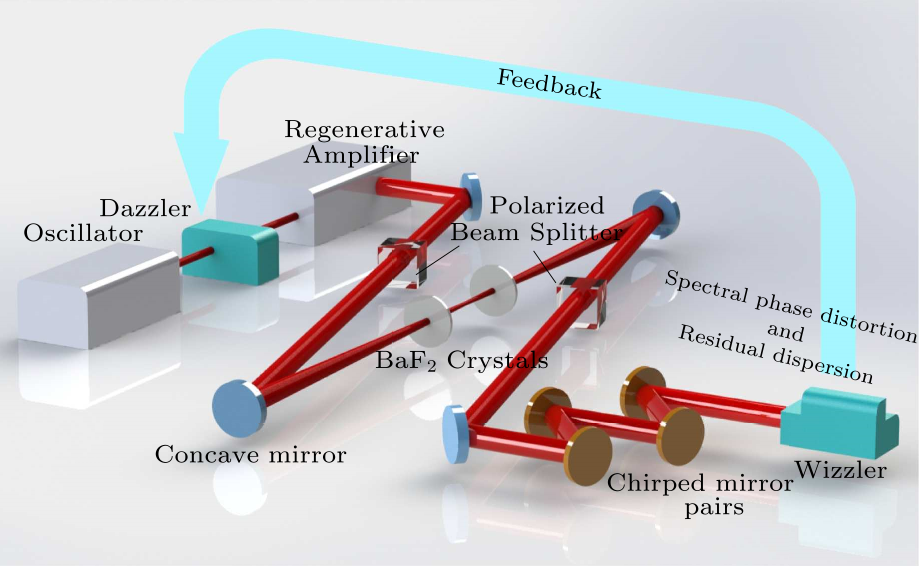
Fig. 1. Detailed structure design of the cascaded XPW filter.
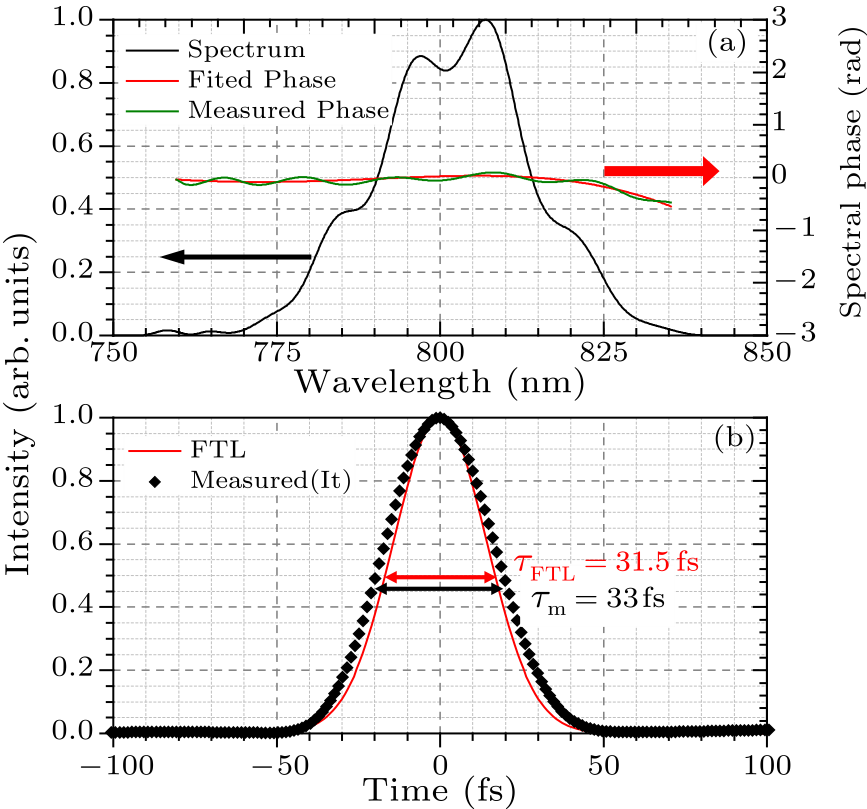
Fig. 2. Spectral and temporal properties of the XPW driving pulses. (a) Black curve: measured spectrum; red curve: fitted spectral phase; and green curve: measured spectral phase. (b) Black dot: measurement of the pulse duration before the XPW; and red line: FTL pulse duration calculated from the spectrum.

Fig. 3. The $M^{2}$ factor measurement result of the regenerative amplifier (compressed).

Fig. 4. Spectral and temporal properties of XPW pulses. (a) Black curve: measurement of the spectrum at the regenerative amplifier (compressed), with the FWHM of 35 nm. Red curve: measurement of the spectrum after the XPW, with the FWHM of 70 nm. (b) Black dot: measurement of the pulse duration of the compressed XPW output. Red line: FTL pulse duration calculated from the spectrum.
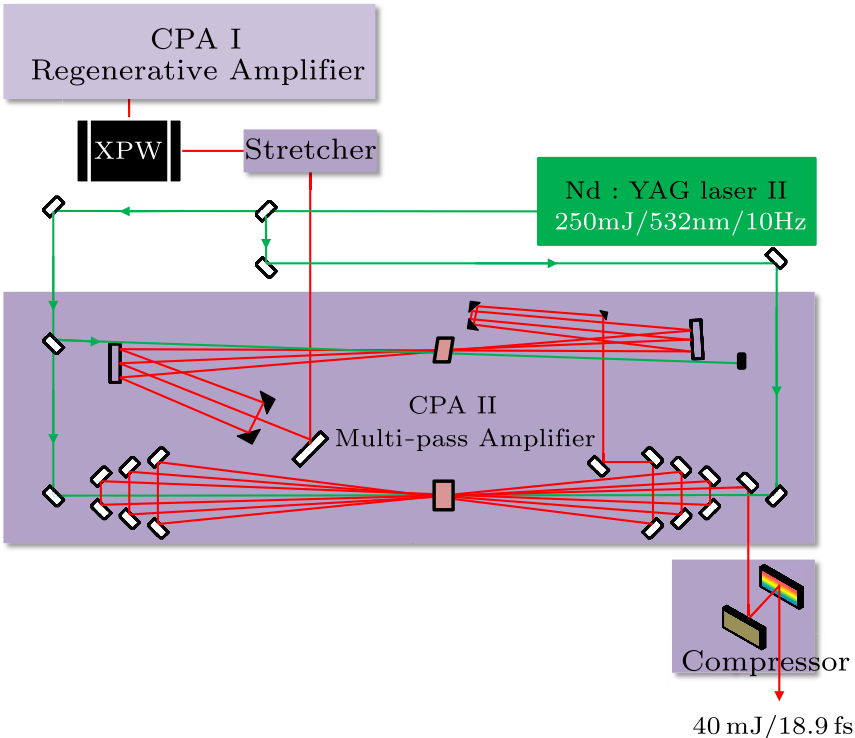
Fig. 5. Schematic diagram of XPW built in the double-CPA system with the peak-power of 2 TW.
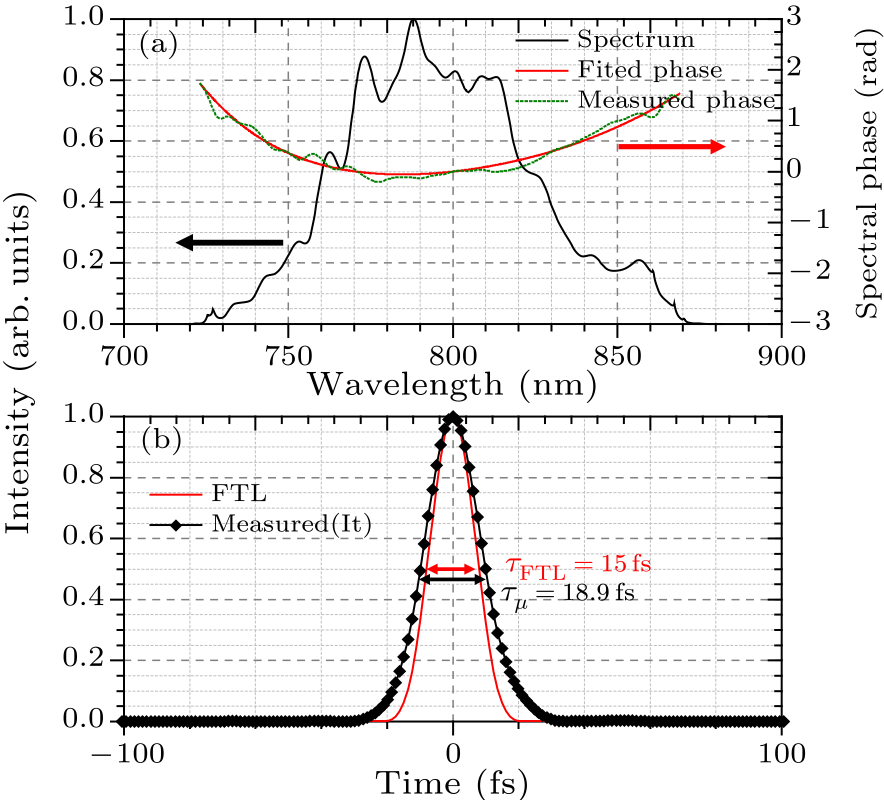
Fig. 6. Spectral and temporal properties of the amplified XPW pulses. (a) Black curve: measured spectrum; red curve: fitted spectral phase; and green curve: measured phase. (b) Black dots: measurement of the pulse duration. Red line: FTL calculated from the spectrum.
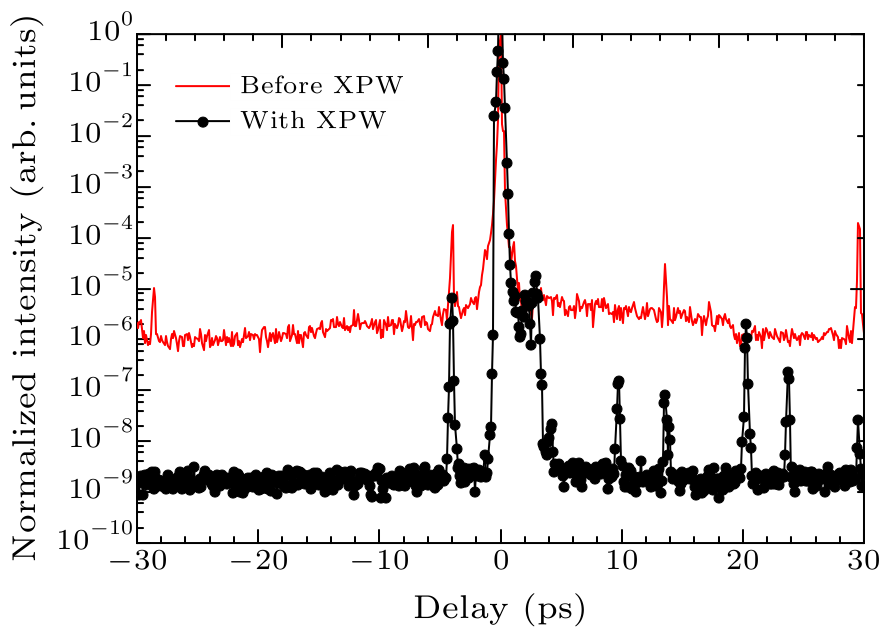
Fig. 7. Third-order cross-correlation measurement of the pulses before XPW (red line) and the TW system output pulses after XPW (black dotted line).
| [1] | Donna S and Gerard M 1985 Opt. Commun. 56 3 |
| [2] | Ed Gerstner 2007 Nature 446 7131 | Laser physics: Extreme light
| [3] | Mourou G, Korn G, Sandner W et al 2011 ELI-Extreme Light Infrastructure Science and Technology with Ultra-Intense Lasers (Berlin: THOSS Media GmbH) p 118 |
| [4] | Chvykov V, Rousseau P, Reed S et al 2006 Opt. Lett. 31 1456 | Generation of 10^11 contrast 50 TW laser pulses
| [5] | Andreev A A, Sonobe R, Kawata S et al 2006 Plasma Phys. Control. Fusion 48 1605 | Effect of a laser prepulse on fast ion generation in the interaction of ultra-short intense laser pulses with a limited-mass foil target
| [6] | Fuchs J, Antici P, d'Humieres E et al 2006 Nat. Phys. 2 1 | Switch it off!
| [7] | Wojtkiewicz J and Durfee C 2004 Opt. Express 12 1383 | High-energy, high-contrast, double-confocal multipass amplifier
| [8] | Kalashnikov M P, Risse E, Schönnagel H et al 2005 Opt. Lett. 30 923 | Double chirped-pulse-amplification laser: a way to clean pulses temporally
| [9] | Thaury C, Quéré F, Geindre J P et al 2007 Nat. Phys. 3 424 | Plasma mirrors for ultrahigh-intensity optics
| [10] | Jullien A, Albert O, Burgy F et al 2005 Opt. Lett. 30 920 | 10^?10 temporal contrast for femtosecond ultraintense lasers by cross-polarized wave generation
| [11] | Jullien A, Canova L, Albert O et al 2007 Appl. Phys. B 87 595 | Spectral broadening and pulse duration reduction during cross-polarized wave generation: influence of the quadratic spectral phase
| [12] | Wang J Z, Huang Y S, Xu Y et al 2012 Acta Phys. Sin. 61 9 (in Chinese) |
| [13] | Ramirez L P, Papadopoulos D N, Pellegrina A et al 2011 Opt. Express 19 1 | Over 1 hour continuous-wave operation of photonic crystal lasers
| [14] | Minkovski N, Saltiel S M, Petrov G I et al 2002 Opt. Lett. 27 22 | Holographic recording of fast events on a CCD camera
| [15] | Minkovski N, Petrov G I, Saltiel S M et al 2004 J. Opt. Soc. Am. B 21 1659 | Nonlinear polarization rotation and orthogonal polarization generation experienced in a single-beam configuration
| [16] | Canova L, Albert O, Forget N et al 2008 Appl. Phys. B 93 443 | Influence of spectral phase on cross-polarized wave generation with short femtosecond pulses
| [17] | Amplitude Techniques: Data Sheet of Sequoia 800[EB/OL] http://www.amplitude-technologies.com/?fond=produit&id_produit=15&id_rubrique= |